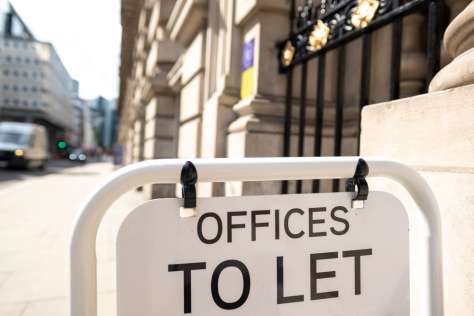A shift in favour of flexibility
The length of commercial leases have become shorter over the past decade in the UK property market, and a typical commercial lease is now just five years long. Market uncertainties and growing demand for flexibility have been the driver behind these shorter lease terms.
Why are flexible commercial leases increasing in popularity?
Businesses are operating in uncertain times, with both Brexit and the Covid-19 pandemic adding numerous unknown complexities for businesses to deal with. Flexible leases allow businesses to adapt their real estate commitments to fit with their ongoing requirements.
The office market was amongst the first to offer notably short flexible leases for terms of 6 months and even as little as six weeks. In the wake of the Covid-19 pandemic and the shift to home working, shorter flexible leases have become more important than ever before.
Industrial units have also followed suit, and there is now a growing market for flexible industrial leases serving fluctuating demand and helping to accommodate start-ups and small businesses who are often less able to predict their future needs.
This demand for flexibility in the industrial market has triggered a rise in industrial flex buildings, which contain multiple blank canvas units that can easily be fitted out to suit the use of most tenants. They offer tenancies as short as one month and allow smaller businesses to house their office staff and practical staff (for example, those working in a laboratory or on a work-bench) under the same roof, keeping the workforce together and saving on rental costs.
With flexibility being key in the commercial property market, landlords and tenants are likely to have a stronger focus on certain terms during the negotiation stage.

How can landlords and tenants look to add flexibility into their commercial leases?
Shorter-term – If the lease is shorter in duration, the tenant is not tied down to occupying one property for a long period. The tenant has the flexibility to reconsider their real estate needs regularly. This can also be beneficial to landlords as they are less likely to have to take action to remove a tenant for rent arrears if the tenant is not tied into a long lease.
Increased break dates – Some leases contain what is known as a ‘break clause’. This allows the landlord and/or tenant to determine the lease on certain stipulated dates throughout the lease term, allowing the parties to enjoy a longer lease whilst maintaining the ability to bring it to an end sooner if appropriate. The parties should consider the conditions of exercising the break to ensure that they are achievable, as well as considering which parties get to enjoy exercising this right. Some landlords and tenants may prefer this approach to offering/taking shorter leases. It can give certainty of occupation for a longer period of time and reduce the need to frequently negotiate new lease terms.
Fewer restrictions on alienation – By giving the tenant the right to assign, underlet or share occupation, the tenant has the flexibility to transfer, reduce or share its lease obligations whilst still giving the landlord its expected income and removing the need to remarket the lease. Often, commercial leases severely limit alienation, but the flexibility should not be discarded too quickly.
Rent Reviews – Commercial leases usually specify strict upwards-only rent reviews in accordance with the open market. The Covid-19 pandemic has operated as a reality check for businesses and has highlighted to tenants their risks and vulnerabilities and left many businesses financially unstable. To help mitigate future risks, parties may need to compromise on rent review provisions and consider including a cap on upwards only reviews to ensure that the landlord maintains a sufficient income whilst still providing some certainty for tenants navigating uncertain market conditions.
Are there any downsides to flexibility?
Although flexibility allows both parties to adapt to reflect current market conditions and their own needs, landlords and tenants will need to balance the advantages with the disadvantages to ensure that their interests are protected.
Flexibility usually creates an element of uncertainty for the parties. Shorter leases and increased break dates mean that neither party benefits from the certainty of knowing that one particular tenant will be occupying the premises for a prolonged period. Landlords are likely to see an increasing rotation of tenants as a result of the shift in favour of flexibility, which limits their ability to ensure a stable income.
This increasing rotation of tenants also means that landlords and tenants are likely to incur increased costs, such as marketing the property, moving costs, and legal costs, as both parties will be renegotiating leases more frequently. Even if the parties decide to enter into a new lease, there will still be time and costs associated with renegotiations. The tenant might be disadvantaged by suffering a rent review on each occasion, which may have occurred less frequently if the tenant was tied into a longer lease.
Benefits and drawbacks aside, both landlords and tenants must adapt to the changing commercial property lease market to ensure they are both offering and obtaining competitive leases whilst protecting their own financial and practical interests.
Here to help
If you have any more questions or would like more information regarding flexible commercial leases, please get in touch with our Commercial Property Team below.
